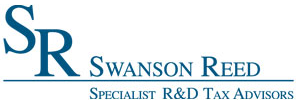Utah Patent of the Month – July 2024
A new invention by Optisys, Inc. represents a groundbreaking leap in antenna technology, revolutionizing both performance capabilities and manufacturing efficiency. Traditionally, antennas, especially those used in demanding applications like satellite communications and radar systems, have been limited by their size, weight, and complexity due to the challenges of fabrication. Optisys addresses these limitations head-on with their innovative approach: using advanced three-dimensional printing processes to manufacture entire antenna arrays as single metal elements.
This method eliminates the need for assembling multiple components, typically required in traditional antenna fabrication, thus reducing potential sources of signal loss and improving overall performance. By integrating a plurality of radiating elements and septum polarizers into a seamless structure, Optisys ensures precise electromagnetic communication and enhances the antenna’s resilience to environmental stressors such as thermal variations and mechanical shocks—critical factors in aerospace applications.
The design incorporates waveguide combiner networks that efficiently merge signals from different polarizations, further optimizing signal transmission and reception. This capability is particularly advantageous in scenarios requiring high data rates and reliable connectivity, such as satellite communications and radar systems used in defense and surveillance.
Optisys’s antenna arrays are not only lighter and more compact but also customizable to fit specific application needs, thanks to the flexibility offered by 3D printing technology. This adaptability allows for the creation of complex geometries and integration of heat dissipation features directly into the antenna structure, enhancing overall efficiency and performance reliability.
Optisys’s pioneering use of 3D printing for antenna manufacturing represents a significant advancement in the field, promising to reshape how antennas are designed and deployed across various industries. With reduced size, weight, and assembly complexity, these antennas not only meet but exceed the stringent performance requirements of modern communication and sensing systems, paving the way for next-generation aerospace technologies and beyond.
Are you developing new technology for an existing application? Did you know your development work could be eligible for the R&D Tax Credit and you can receive up to 14% back on your expenses? Even if your development isn’t successful your work may still qualify for R&D credits (i.e. you don’t need to have a patent to qualify). To find out more, please contact a Swanson Reed R&D Specialist today or check out our free online eligibility test.
Who We Are:
Swanson Reed is one of the U.S.’ largest Specialist R&D tax advisory firms. We manage all facets of the R&D tax credit program, from claim preparation and audit compliance to claim disputes.
Swanson Reed regularly hosts free webinars and provides free IRS CE and CPE credits for CPAs. For more information please visit us at www.swansonreed.com/webinars or contact your usual Swanson Reed representative.
What is the R&D Tax Credit?
The Research & Experimentation Tax Credit (or R&D Tax Credit), is a general business tax credit under Internal Revenue Code section 41 for companies that incur research and development (R&D) costs in the United States. The credits are a tax incentive for performing qualified research in the United States, resulting in a credit to a tax return. For the first three years of R&D claims, 6% of the total qualified research expenses (QRE) form the gross credit. In the 4th year of claims and beyond, a base amount is calculated, and an adjusted expense line is multiplied times 14%. Click here to learn more.
R&D Tax Credit Preparation Services
Swanson Reed is one of the only companies in the United States to exclusively focus on R&D tax credit preparation. Swanson Reed provides state and federal R&D tax credit preparation and audit services to all 50 states.
If you have any questions or need further assistance, please call or email our CEO, Damian Smyth on (800) 986-4725.
Feel free to book a quick teleconference with one of our national R&D tax credit specialists at a time that is convenient for you.
R&D Tax Credit Audit Advisory Services
creditARMOR is a sophisticated R&D tax credit insurance and AI-driven risk management platform. It mitigates audit exposure by covering defense expenses, including CPA, tax attorney, and specialist consultant fees—delivering robust, compliant support for R&D credit claims. Click here for more information about R&D tax credit management and implementation.
Our Fees
Swanson Reed offers R&D tax credit preparation and audit services at our hourly rates of between $195 – $395 per hour. We are also able offer fixed fees and success fees in special circumstances. Learn more at https://www.swansonreed.com/about-us/research-tax-credit-consulting/our-fees/
Choose your state


















